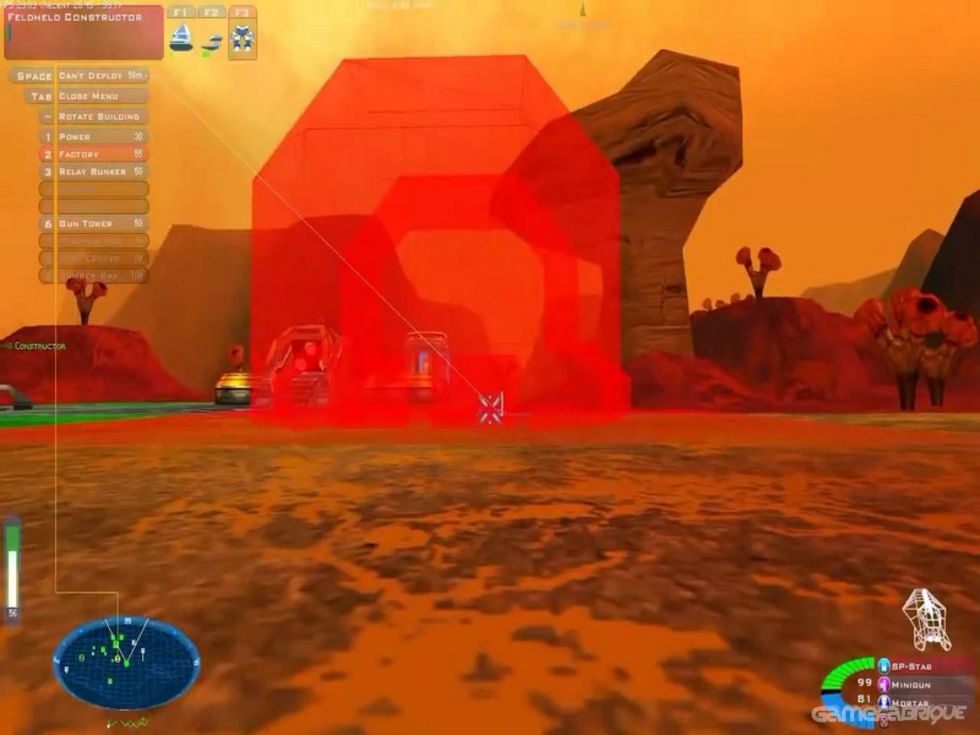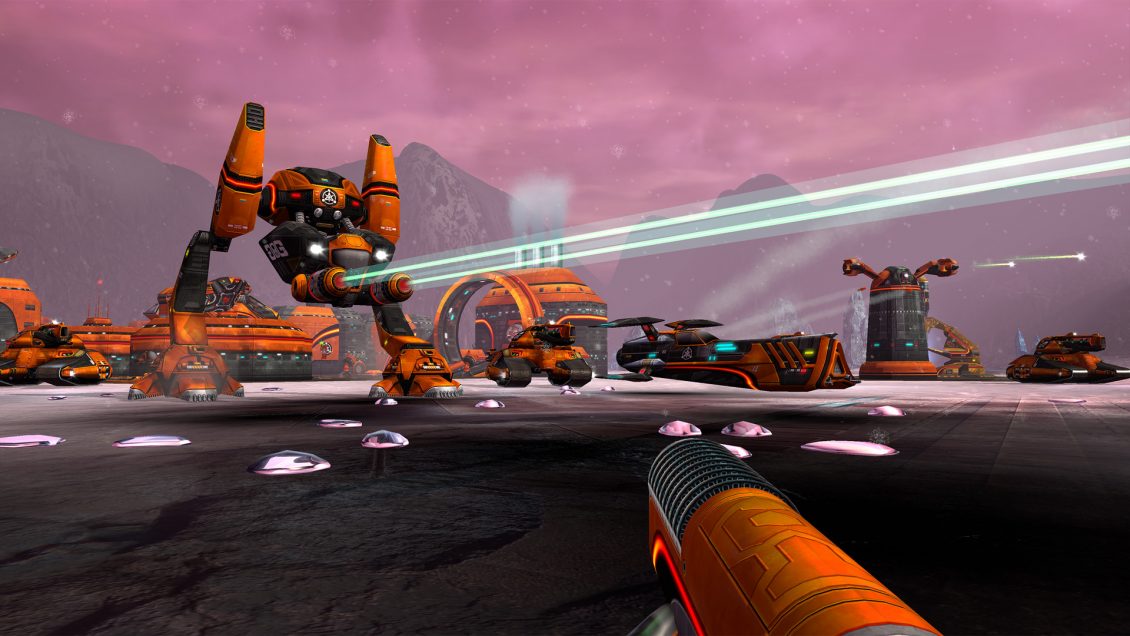
That problem has been remedied in Battlezone II, which offers a more complete command menu that lets you give a wider variety of orders to both offensive and utilitarian units, no matter where you are on the field. The only problem with the first game's interface was that it was difficult to assign orders to units that weren't in your line of sight. Fortunately, the interface has been significantly improved over Battlezone, which makes it easier to control your other units than before. In fact, you spend so much time on short solo missions that it seems as if the real-time strategy elements of the game are almost an afterthought. Inevitably, you'll be planning your base defenses and preparing to build offensive units when you'll receive an order to go explore an event happening somewhere else, and you'll have to abandon the strategy portion of the game to go on some solo excursion. The first ten missions in the game feel like tutorials, and it isn't until you've played through at least a dozen missions that you're given the ability to plan and build your base and assemble an army of units.Įven when you finally take control of an army, it feels less significant than in Battlezone. Instead, you just follow your commander around and perform various small tasks and listen to reports of other more interesting activities as they occur elsewhere in the field. Early missions typically tell you what to do, step by step, and lack any of the base building and resource gathering that made the first game fun.

Whereas Battlezone was entertaining precisely because of the sheer amount of control it put it your hands, Battlezone II is dull because it isn't as flexible. That the campaign's story is interesting enough to motivate you from mission to mission is a good thing, because Battlezone II's missions themselves are often boring. There's something going on that's more than meets the eye, and watching the story unfold is one of the more enjoyable elements of Battlezone II. You are given conflicting orders, put in harm's way more than seems necessary, and then told to remain silent about your operations. However, even from the beginning it is clear that something else is amiss. Your apparent enemy is the Scion, an alien race that is building some sort of superweapon and destroying ISDF outposts. Their alliance is the basis for the sequel, which begins with you serving as a lieutenant for the ISDF, a multinational fighting force attempting to combat alien terrorism. Toward the end of the game, a hostile alien race appeared that forced the warring earthlings to team up against the new threat.

The two superpowers on Earth were attempting to become superpowers on other worlds as well and were fighting to colonize and mine resources from the planets in the solar system.

As a result, Battlezone II is just a dumbed-down version of its predecessor.īattlezone was set in the late 1960s during a secret space race between the United States and the Soviet Union. Unfortunately, in what must have been an effort to make Battlezone's sequel more marketable, developer Pandemic Studios attempted to fix something that wasn't broken. Whatever the reason for Battlezone's disappointing sales, it certainly wasn't the quality of the game. It combined elements of real-time strategy and action games to create a hybrid that was at once unique, intuitive, and fun. Activision's Battlezone has become better known for its poor sales than for the fact that it was a great game.


 0 kommentar(er)
0 kommentar(er)
